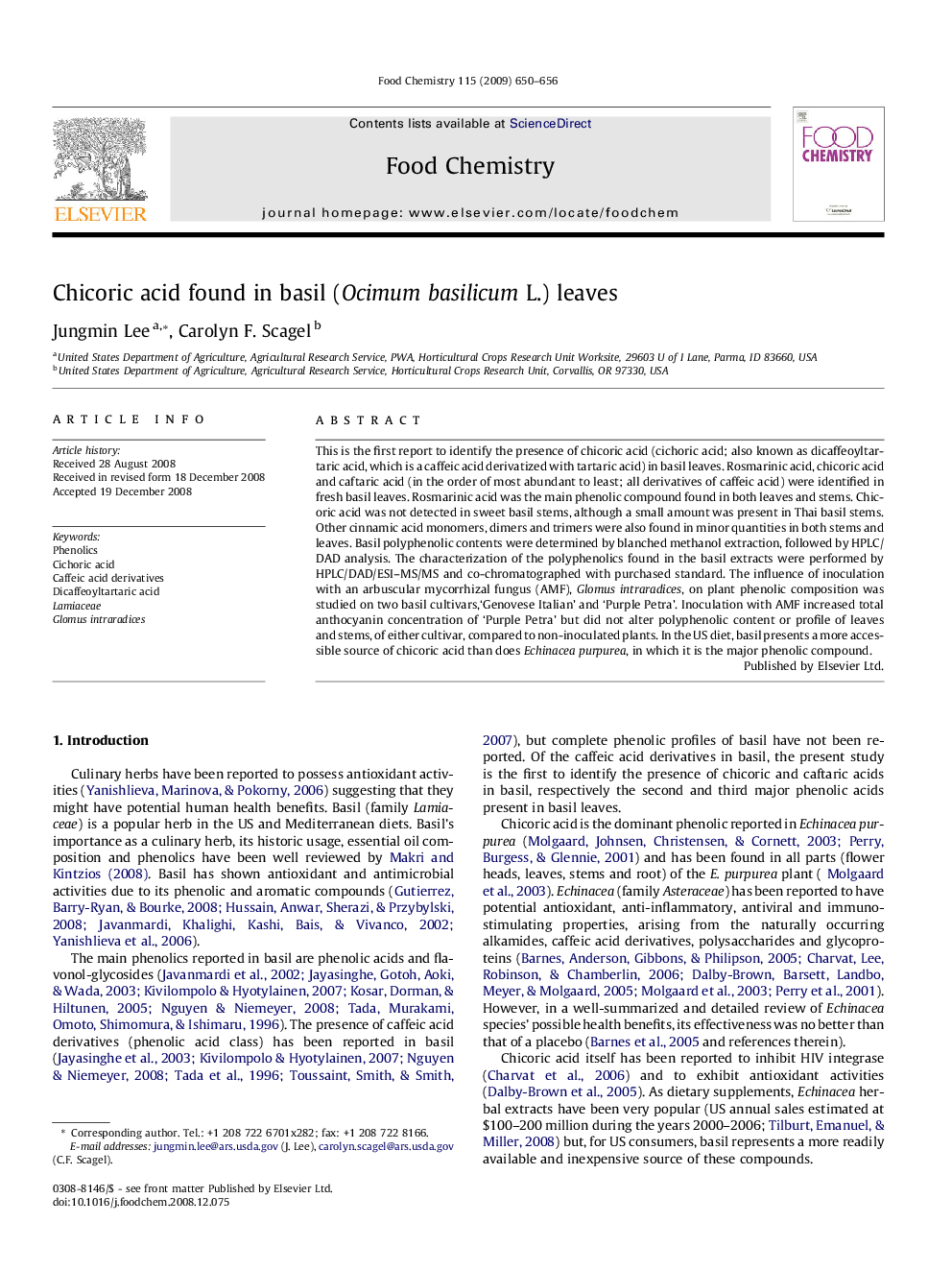| Article ID | Journal | Published Year | Pages | File Type |
|---|---|---|---|---|
| 1191000 | Food Chemistry | 2009 | 7 Pages |
This is the first report to identify the presence of chicoric acid (cichoric acid; also known as dicaffeoyltartaric acid, which is a caffeic acid derivatized with tartaric acid) in basil leaves. Rosmarinic acid, chicoric acid and caftaric acid (in the order of most abundant to least; all derivatives of caffeic acid) were identified in fresh basil leaves. Rosmarinic acid was the main phenolic compound found in both leaves and stems. Chicoric acid was not detected in sweet basil stems, although a small amount was present in Thai basil stems. Other cinnamic acid monomers, dimers and trimers were also found in minor quantities in both stems and leaves. Basil polyphenolic contents were determined by blanched methanol extraction, followed by HPLC/DAD analysis. The characterization of the polyphenolics found in the basil extracts were performed by HPLC/DAD/ESI–MS/MS and co-chromatographed with purchased standard. The influence of inoculation with an arbuscular mycorrhizal fungus (AMF), Glomus intraradices, on plant phenolic composition was studied on two basil cultivars,‘Genovese Italian’ and ‘Purple Petra’. Inoculation with AMF increased total anthocyanin concentration of ‘Purple Petra’ but did not alter polyphenolic content or profile of leaves and stems, of either cultivar, compared to non-inoculated plants. In the US diet, basil presents a more accessible source of chicoric acid than does Echinacea purpurea, in which it is the major phenolic compound.
